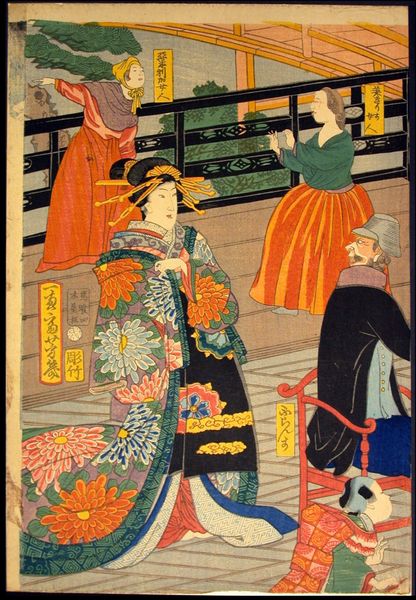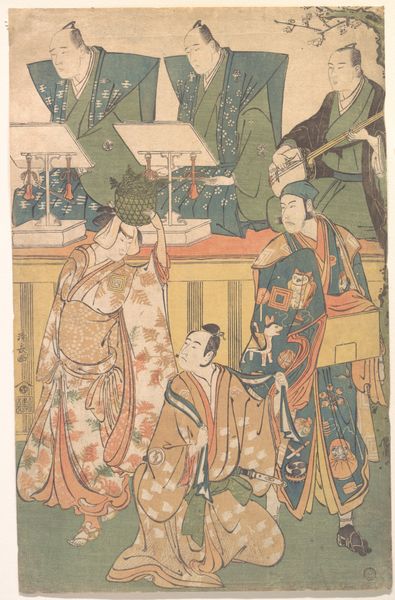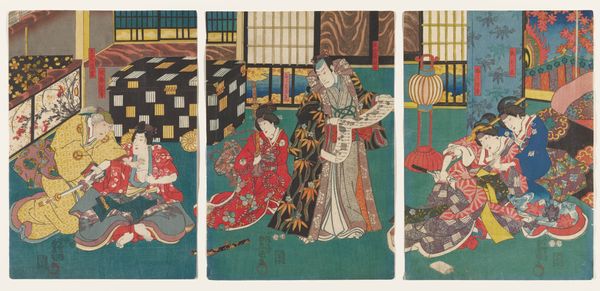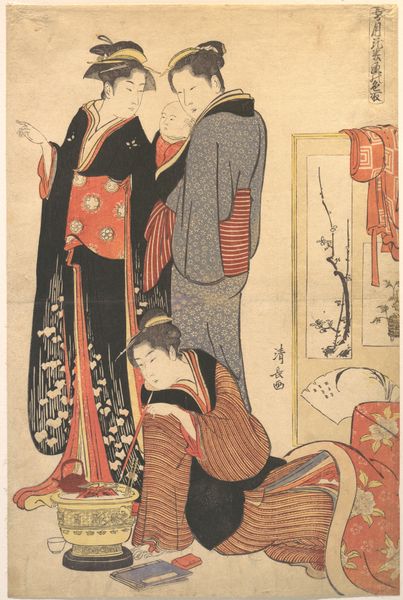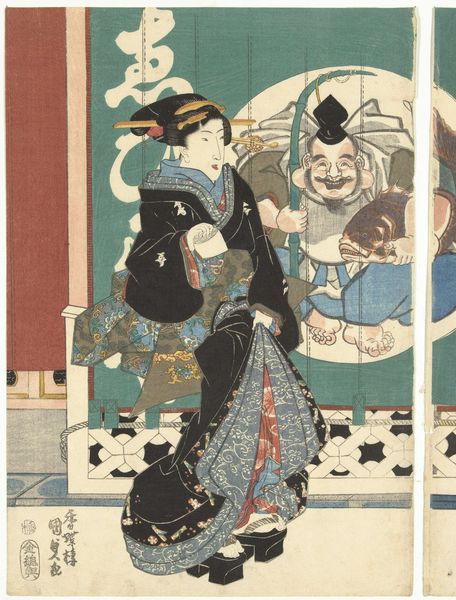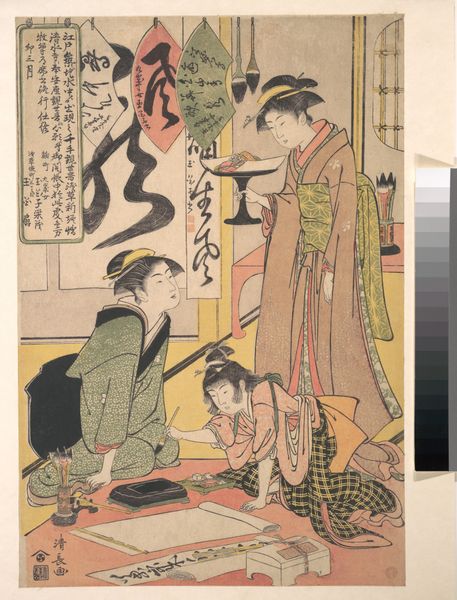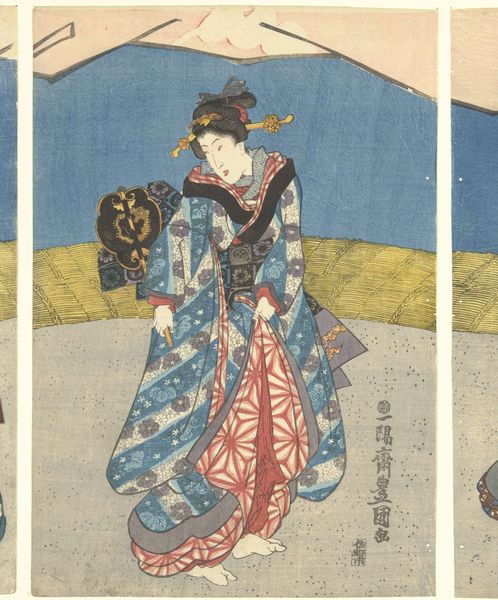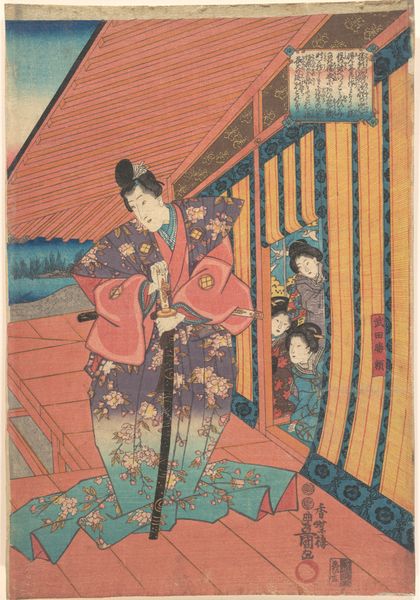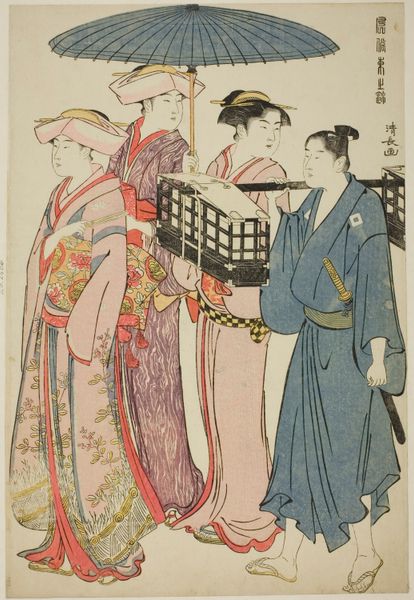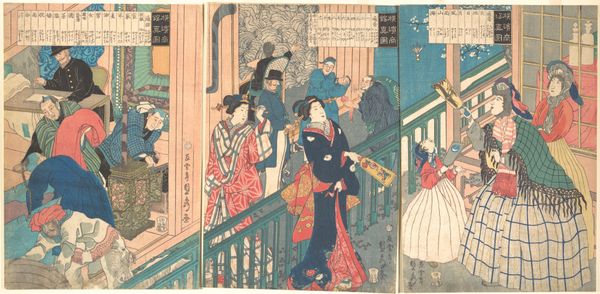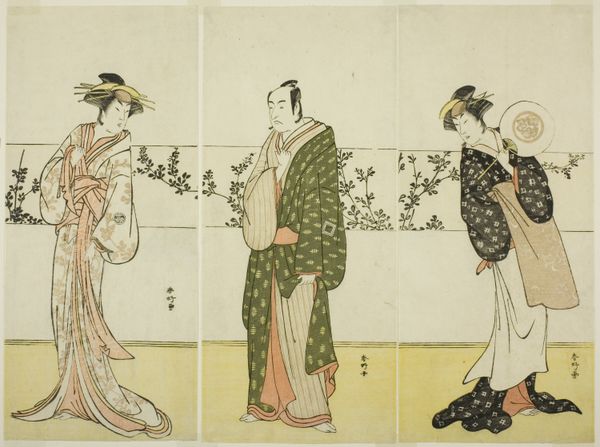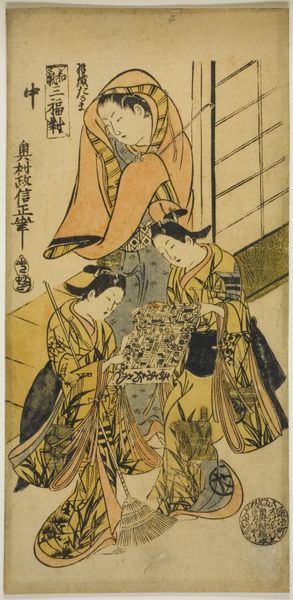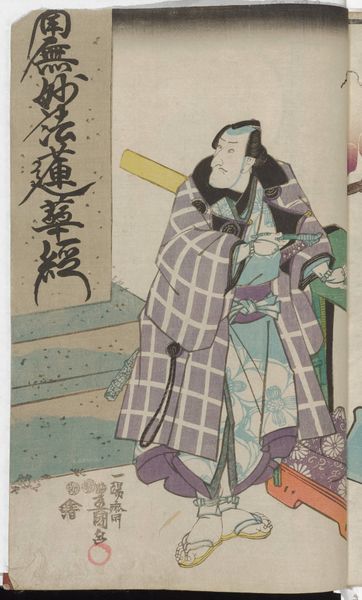
print, woodblock-print
# print
#
impressionism
#
asian-art
#
ukiyo-e
#
woodblock-print
#
orientalism
#
genre-painting
Dimensions: height mm, width mm
Copyright: Rijks Museum: Open Domain
Editor: So, here we have Utagawa Yoshiiku’s woodblock print from 1860, “Foreigners at a Drinking Party in the Gankiro Teahouse.” It’s quite striking. The contrast between the Japanese woman in the foreground and the European figures is…unsettling, almost. What do you make of it? Curator: Well, focusing on the material realities of its production, consider the woodblock print itself. It was a relatively inexpensive and mass-produced medium. This challenges the traditional hierarchy separating ‘fine art’ from more commercial or popular forms. Also, how the materials and techniques served a purpose in shaping perceptions of “foreigners,” or more broadly, how cross-cultural interactions were represented. Editor: That's interesting. So, you're saying the very *process* of creating a woodblock print contributes to the work's meaning, beyond just the image itself? Curator: Exactly! The artist and artisans relied on cheap materials to produce images meant for popular consumption, in this instance creating and perpetuating stereotypes in response to increased contact with the West, particularly regarding commerce and leisure. What does the composition itself tell us about these social dynamics? Editor: I see what you mean. The composition, with the central female figure offset to make space for Westerners suggests the commercial power the latter might hold. But there's still that sense of "otherness," of them being observed. Curator: Yes. And look at the clothing, the colors, even the poses. It suggests how commodities circulate and are consumed, right down to what people are wearing. This all relates to the burgeoning global economy and Japan’s place within it during this period. It's all about who gets to profit. Editor: This definitely shifts how I viewed this print, less about the surface impression of “exoticism,” but considering what its manufacture implies about society. I hadn't considered it on this scale, but it is incredibly interesting to analyze it through this materialist perspective. Curator: Precisely, art is made for specific markets and economic climates. Looking at what this means allows a much more precise idea about what to learn.
Comments
No comments
Be the first to comment and join the conversation on the ultimate creative platform.
